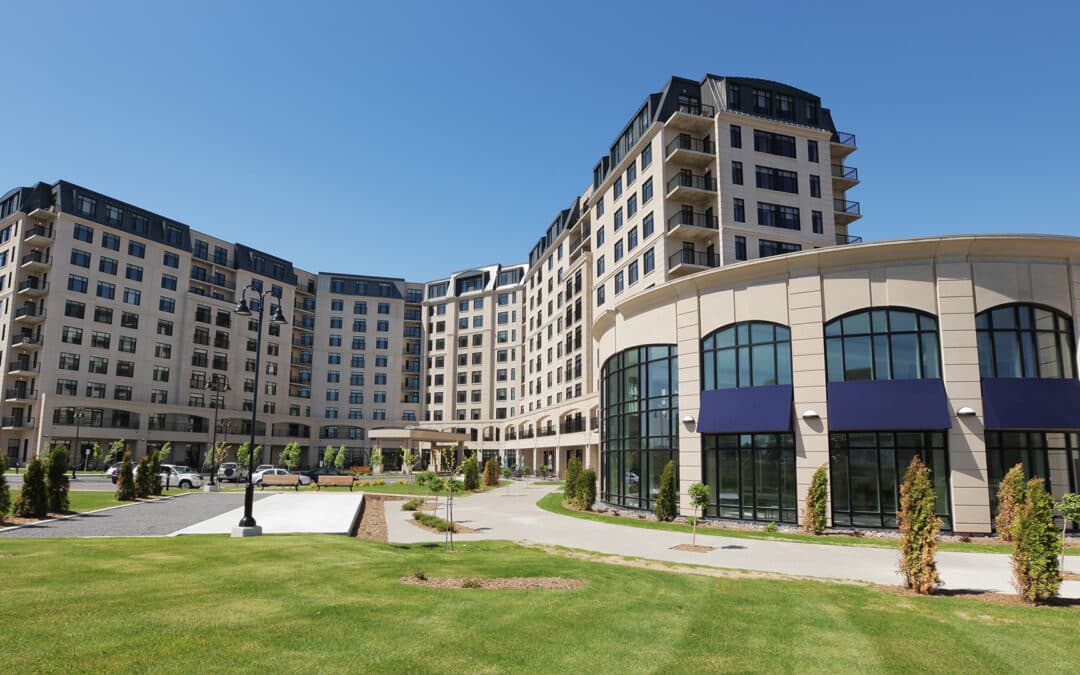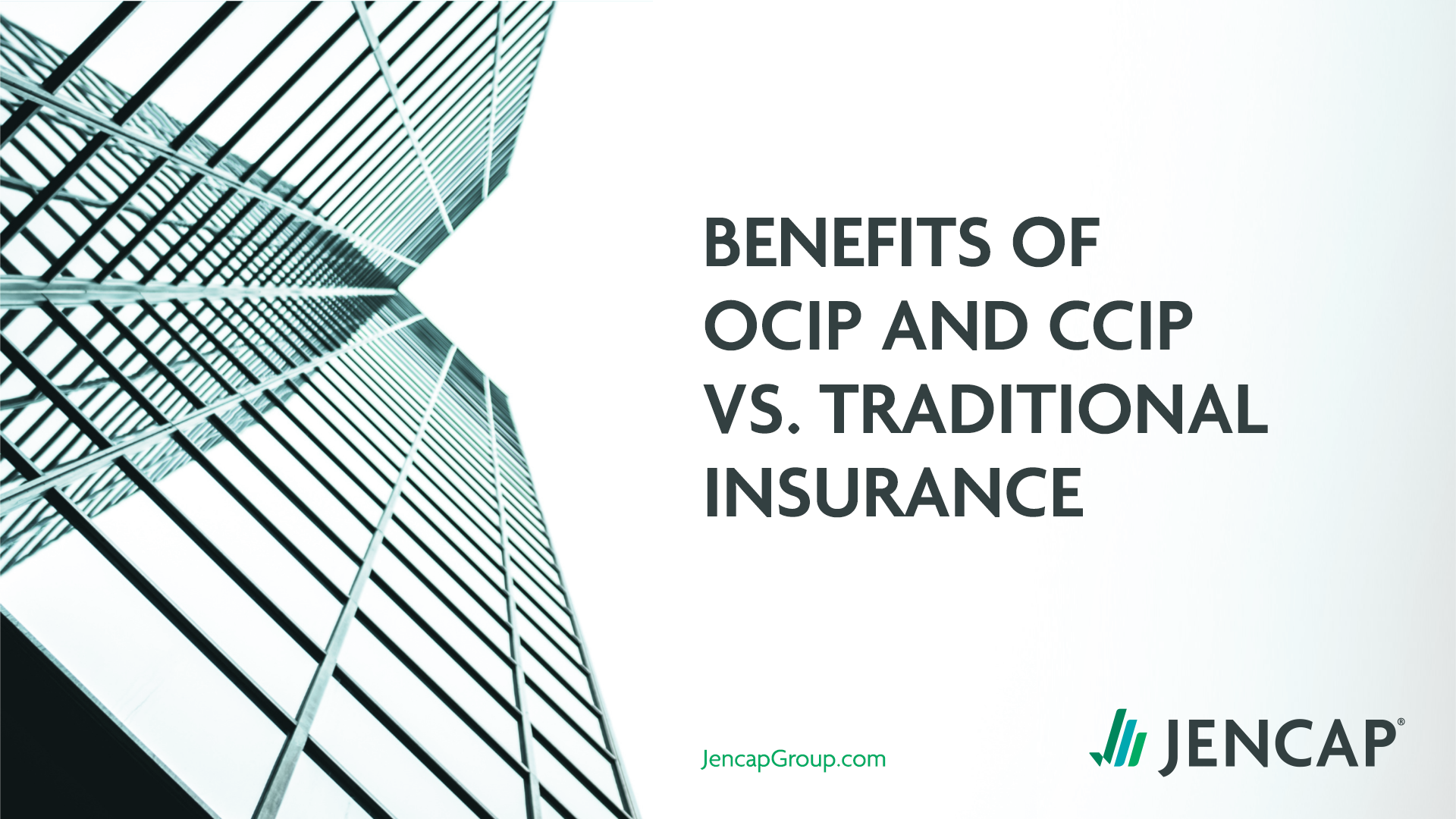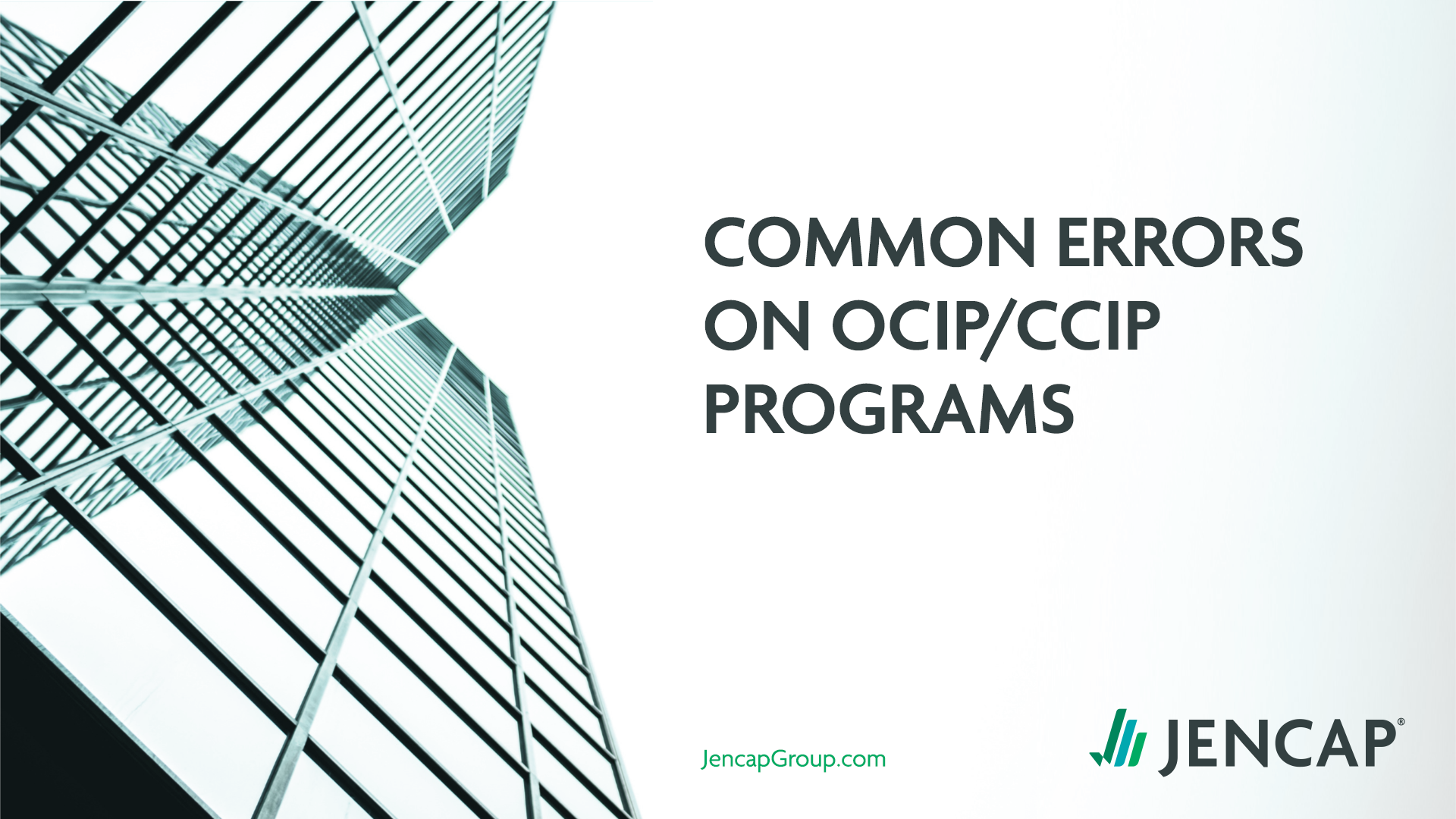Owner-controlled insurance programs (OCIPs) are a type of “wrap-up” insurance policy that a property owner can take out for a construction or renovation project. Unlike the traditional construction insurance model — where each contractor or subcontractor secures their own coverage — OCIPs consolidate coverage under a single policy held by the project owner or developer.
As Mike Yovino, Jencap Construction Specialist Broker, explains, “A wrap-up literally ‘wraps’ the site into a policy that the owner, the contractor, and sub-contractors are all enrolled in. The policy ensures that there’s consistent coverage for everybody enrolled and the ability to eliminate coverage gaps becomes more seamless.”
Purchasing an OCIP allows the property owner to take a more proactive role in managing their project’s risk and gives peace of mind that everyone involved in the project has sufficient coverage. An OCIP streamlines the insurance process, minimizes potential gaps in coverage, and can help control costs.
In this blog, we’ll outline who would benefit from an OCIP, what kind of coverage it offers, and the key benefits of this type of policy.
Who Needs an Owner-Controlled Insurance Program?
Structuring a project’s insurance program as an OCIP is often a very attractive option for a property owner or developer who is embarking on a major construction project. This might include:
- Commercial buildings
- Federal or municipal infrastructure development
- Transportation construction
- Hotels
- Large residential buildings
The size and scope of these projects often involve numerous contractors, subcontractors, and suppliers. Rather than relying on individual policies from each party, the project owner or developer can use an OCIP to ensure adequate coverage for everyone involved and maintain oversight across the entire project.
What Owner-Controlled Insurance Programs Cover
OCIPs usually cover the scope of a single project, which can include multiple job sites — such as the construction site, on-site temporary structures, and storage locations — associated with that one project. (The exception to this is a “rolling” OCIP, which rolls several similar or related projects together under one policy.)
The beauty of an OCIP is that it’s a custom insurance program built specifically to meet the needs of a project, so no two policies are exactly alike. That said, an OCIP may include commercial general liability, workers’ compensation, completed operations insurance, and commercial umbrella coverage. The liability side would include general liability, umbrella, and, at times workers’ compensation, but Jencap can explore options for site specific professional, environmental and builder’s risk coverage. Depending on the project, some owners may also wish to include more specialized coverages, like pollution and environmental liability, or coverages specific to a particular industry, like railroad protective liability.
Although OCIPs provide very comprehensive coverage, there may be some things — such as commercial auto insurance, off-site contractors, or third-party vendors — that aren’t covered. As with all insurance policies, it’s important to carefully review policy terms and details for gaps or limitations.
The Benefits of Owner-Controlled Insurance Programs
With traditional construction insurance programs, developers, general contractors, and subcontractors are each responsible for purchasing their own liability policies. Under an OCIP, however, all contractors and subcontractors are covered under the same policy, which provides a number of benefits to both project owners and contractors:
- Cost Savings: When each contractor or subcontractor purchases their individual policy, they pass that cost on to the project owner in their quote. By consolidating everything into one OCIP policy, the project owner can negotiate better terms and rates by buying coverage in bulk from a single insurer, ultimately reducing the overall cost for insurance.
- More Complete Coverage: OCIPs eliminate worry for the project owner that their contractors’ policy coverages and limits won’t provide sufficient protection for the entire project. When coverage is patch-worked together, there’s always a risk of detrimental gaps or exclusions. Because OCIPs are custom-built with the assistance of an expert broker, the owner can create a policy that is tailored to their project needs to better guard against gaps.
- Better Risk Management: With an OCIP, the project owner has more control over risk mitigation efforts. They’re able to implement and require uniform safety and loss-prevention measures across all contractors. Not only does this create a safer working environment for everyone on the project, it also reduces the likelihood of property damage and liability claims.
- Simplified Claims Processing and Resolution: Because each party is responsible for purchasing their own policy, there are often several different insurance companies involved in covering the project. In the event of a loss or accident, several (or all) of those insurance companies may get tied up in court trying to determine which contractor is at fault and whose policy is responsible for covering the damages. With an OCIP, this isn’t an issue; everything is bundled under a single policy.
- Quicker and More Flexible Contractor Selection: With an OCIP, an owner has more flexibility when choosing contractors for a project. An OCIP removes the hurdle of having contractors secure their own insurance for a project, which can take time and push out start dates. In addition, OCIP policies allow owners to work with contractors who may not be able to get insurance on their own, either because they can’t demonstrate sufficient work history or because they aren’t able to secure the coverage limit needed for a particular project.
Because owner-controlled insurance programs are complex and tailor-made for each project, they require an expert broker to properly set it up. According to Yovino, “There are a lot of things that go into a project before a shovel goes in the ground and through completion. It’s important to work with the right retail broker and wholesale broker who understand the intricacies of a wrap-up. There aren’t a lot of us in the country who specialize in this. When you have the ability to put some of these tougher projects into an OCIP, it’s going to give the insured a more complete package to eliminate potential loss.”
Jencap’s team of specialized brokers can provide insight and guidance for all of your construction clients’ insurance needs. Contact us today to leverage our vast industry knowledge and tap into our extensive carrier network. You can also keep up to date with our industry news here.










































